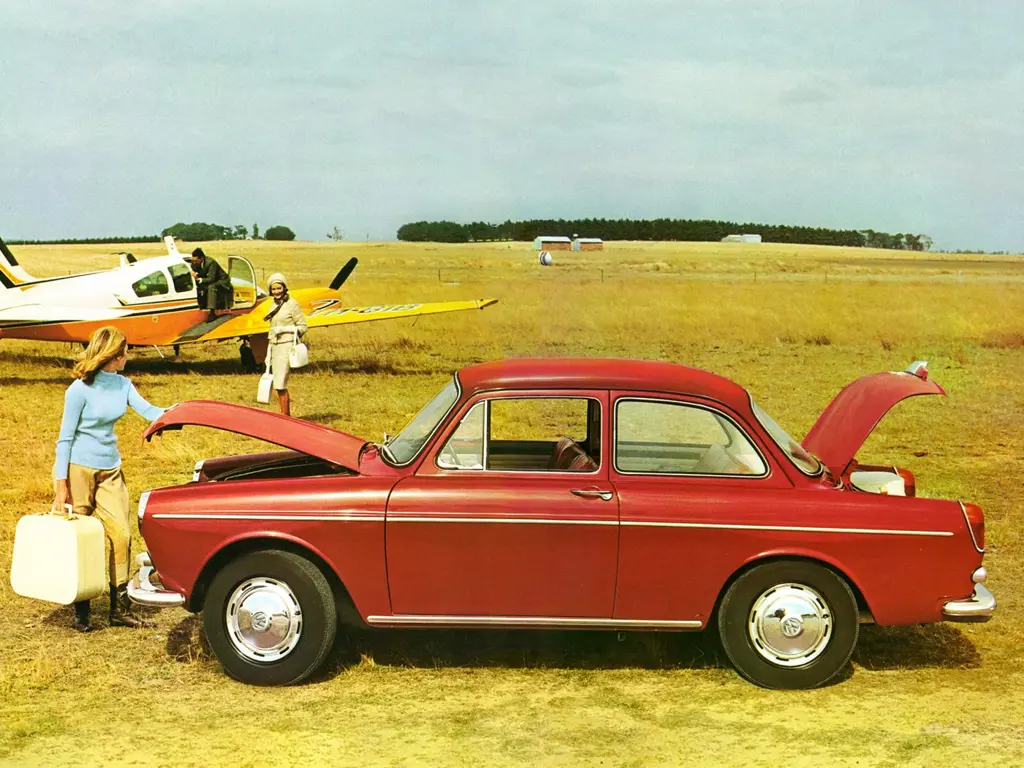THE VOLKSWAGEN TYPE 3 AT SIXTY
22 March 2022
It is hard to imagine the impact of the new Type 3 on German motorists. For the past 23 years, a Volkswagen car automatically meant the Beetle, but now at the 1961 Frankfurt Motor Show, the famous badge adorned a medium-sized two-door saloon.
By the late 1950s it was increasingly apparent to Wolfsburg’s management that the Beetle needed to be supplanted by a larger model. In addition, the post-war ‘Wirtschaftswunder’ German economic boom resulted in a demand for larger and more opulent cars, and so the Type 3 was the VW formula writ large.

Power for the new Volkswagen was from a 1,493cc engine, while the body-on-chassis construction and the wheelbase were the same as the Beetle. The 1500 competed directly against the Ford Taunus P3 and the Opel Rekord P2 and appealed to anyone wishing to trade up from their Beetle or Auto Union 1000.
The Type 3 represented a considerable gamble for VW, but fortunately, it proved ideal for its intended market. Its styling was smartly conservative, while another asset was the nicely appointed cabin. A folding rear armrest, a clock, and a rheostat control for the panel lights and wipers were a far cry from the early Beetles.
German motorists tended to regard the 1500 as reasonably priced transport, but in the UK, heavy import duties inflated the cost from £750 to £1,098 12s 8d. Such a figure was on a par with a Ford Zodiac or a Vauxhall Cresta, but several drivers believed the VW was worth every penny.
Autocar thought the secret to Volkswagen’s success was “the hidden one of superb workmanship and a worldwide reputation for reliability and first-class service”. Similarly, the great motoring writer Bill Boddy thought, “The finish of a VW is on a par with the best there is” and:
To sum up, this is a very high-class family car, not over complex in fittings or controls, but beautifully made and finished, and giving the impression it will go on for ever
1962 saw the original Notchback saloon augmented by the Variant, the Squareback
The following year saw the debut of the twin carburettor S, which Autocar found “undoubtedly the best car yet from Wolfsburg”.
In August 1965, VW introduced a 1.6-litre engine and a Fastback option. As a result, British sales of the Notchback ceased, although it remained available in Germany until the end of Type 3 production in 1973. Motor Sport regarded the latest 1600TL as “an honest, roomy, well-mannered car but expensive in England, at £967”.
1965 also marked the Type 3 finally becoming officially available in VW’s crucial US export market. One reason for the delay was that Wolfsburg wanted to ensure its dealers were properly trained to service the “1600’. A second was the need to ensure that Beetle owners would accept the Variant and the Fastback; the Notchback was not sold in the USA.
And so, to introduce the Type 3 Fastback to the great American motorist, the importer commissioned one of the finest TV advertising campaigns of the decade. It was fronted by a young actor named Dustin Hoffman…
